[France/Spain - Country Basque] Bayonne and Pamplona festivals - July
complete
Kazaah
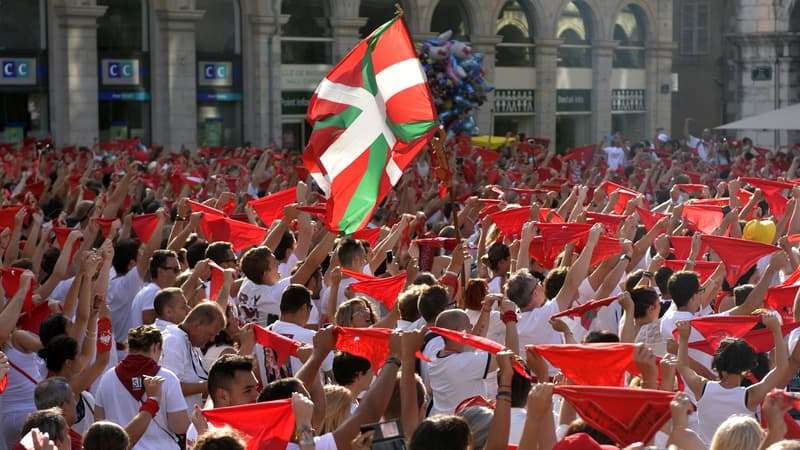
The Fêtes de Bayonne is a vibrant and highly anticipated festival that celebrates the festive traditions of the Basque Country. Drawing in a remarkable number of participants, ranging from 1 to 1.5 million
, it has gained significant popularity throughout France. During the five-day event, starting the last wednesday of July
, the city of Bayonne comes alive with music serving as a central element, brought to life by choirs, chorales, bands, and traditional Basque music groups that animate and engage festival-goers. From the exhilarating bull runs in Place Saint-André to the enchanting illuminated Corso parade, the festivities revolve around their revered king, Léon.
The history of the Fêtes dates back to 1932 when former rugby players from Aviron Bayonnais, inspired by the renowned festivals in their twin city of Pamplona, conceived the idea of organizing a joyous gathering in Bayonne. Over time, the Fêtes de Bayonne has flourished into a prestigious event, attracting people from far and wide.
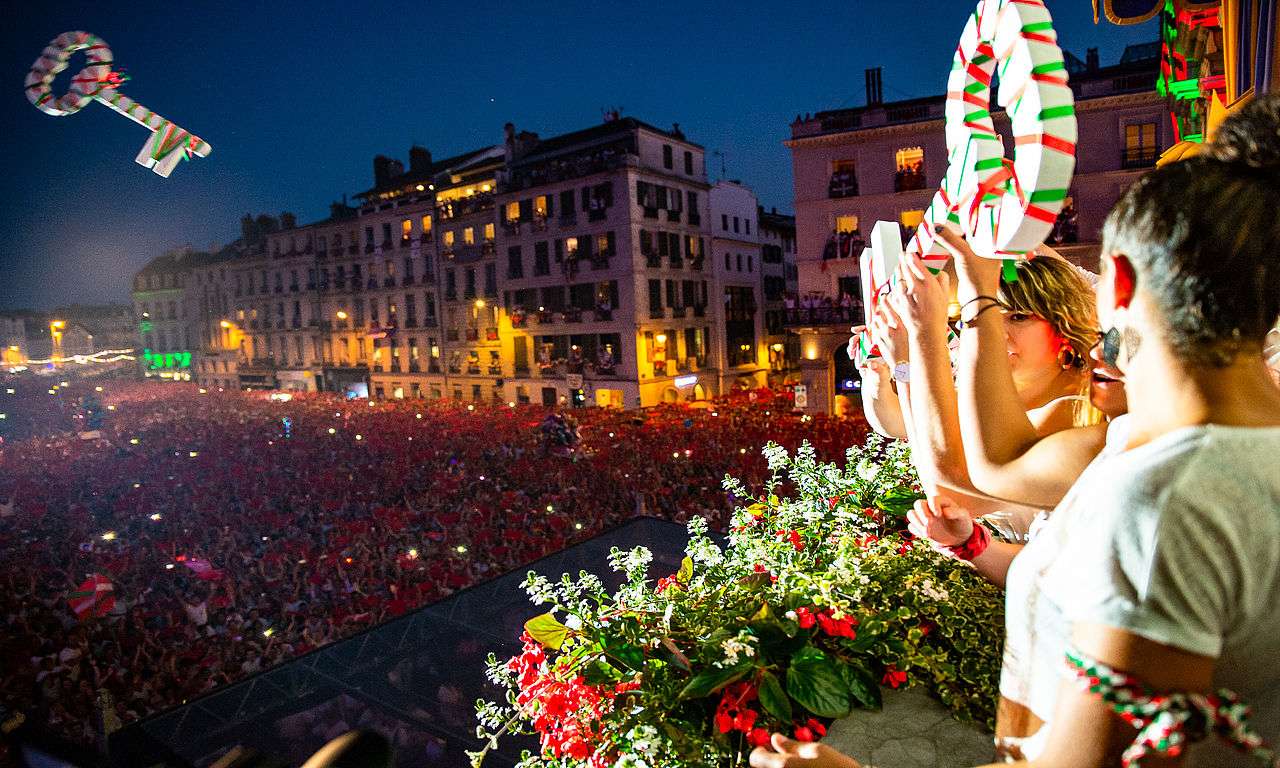
The imaginative character of King Léon, who symbolically reigns over Bayonne during the festival
, was created by the association Or Konpon. From the balcony of the City Hall, seated on his throne, King Léon watches over his subjects and leads Bayonne throughout the Fêtes. The festayres, spanning across all age groups, hold deep reverence and respect for their king, and a significant highlight of each day is the precise moment at noon when the king is ceremonially awakened.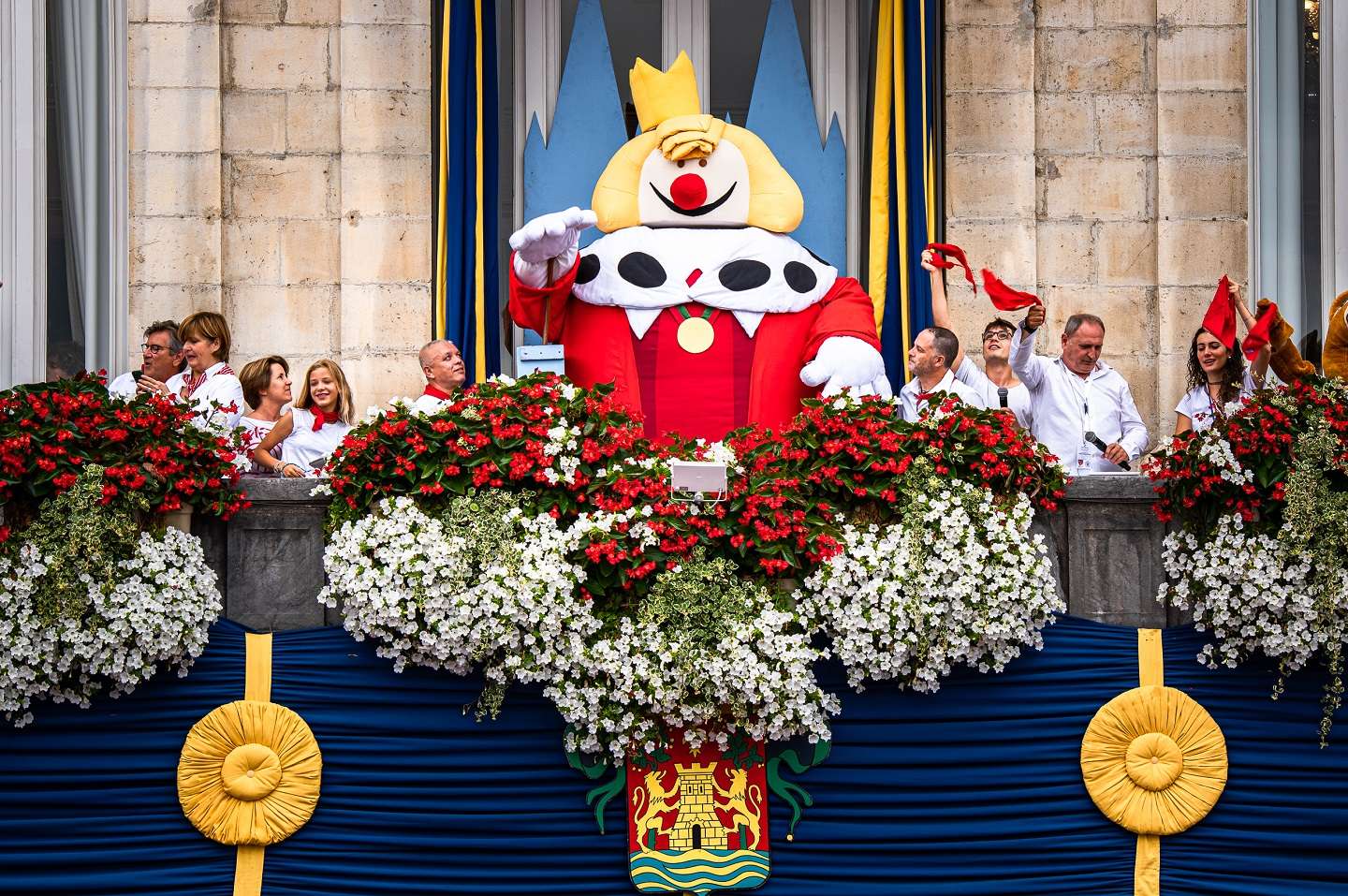
In subsequent years, the
"Court of the King" was established, consisting of six characters
: the favorite (the eternal lover of King Léon, who aspires to become his queen), the doctor (the king's advisor responsible for his well-being), the governess (a strong-willed caretaker), the chocolatier (the king's skilled cook and pastry chef), the marshal (the enforcer who maintains order in the castle), and the jester (a whimsical and clever artist who entertains the court). Every morning at 11 am, the giant figures representing the court lead an immense crowd of festayres to the City Hall for the awakening of King Léon, adding an element of grandeur and excitement to the festivities.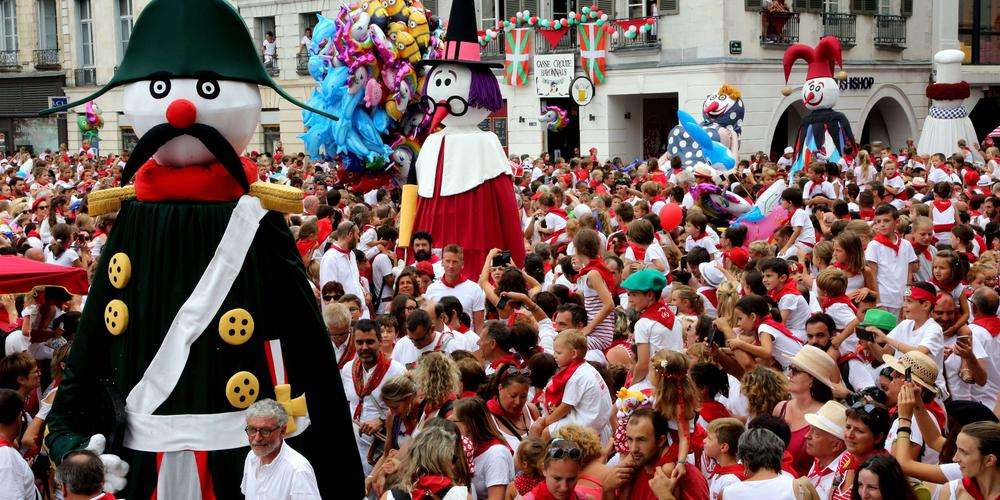
The attire of the festayres has evolved over the years. Initially, there was no specific dress code when the Fêtes were established in 1932. However, in the early 1990s, the president of the Fêtes Commission called upon the people of Bayonne to embrace a dress code inspired by their twin city of Pamplona.
This dress code entails wearing a white outfit adorned with a red scarf.
Today, this attire has transcended mere fashion and has become a powerful symbol of allegiance to the values of the Fêtes de Bayonne, fostering a sense of unity and camaraderie among festayres.Sources : https://fetes.bayonne.fr/
--------------------------------------------------------------------------
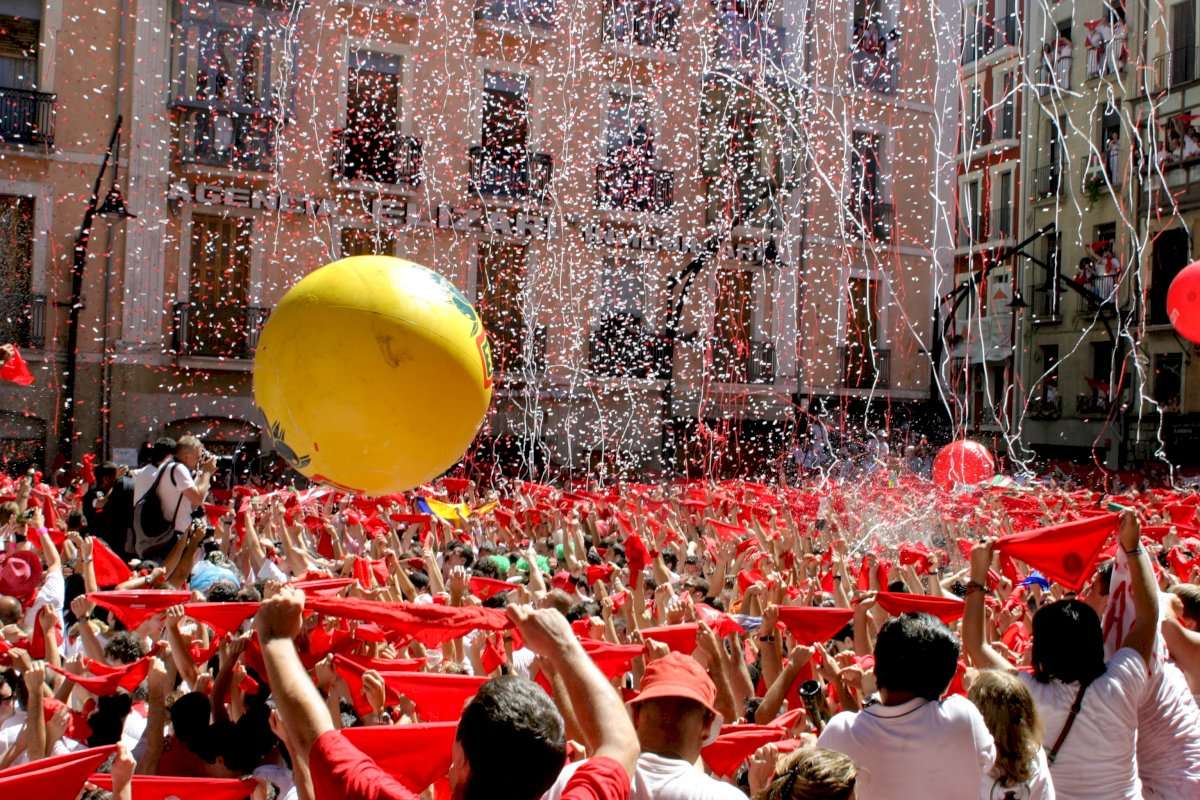
The San Fermín festival is a yearly celebration held in Pamplona
, a city located in the picturesque region of Navarra in northern Spain. This lively event pays homage to Saint Fermín
, the co-patron saint of Navarra, and has gained international recognition for its vibrant atmosphere and iconic activities.Taking place from July 6th to July 14th, the festival attracts around 3 millions visitors from around the world
who come to experience the rich cultural traditions and thrilling festivities. The highlight of the festival is the famous "Running of the Bulls" (Encierro)
, where brave individuals run alongside a group of charging bulls through the narrow streets of Pamplona. Lasting about three minutes and covering a distance of 875 meters, this daring spectacle requires physical endurance and mental alertness.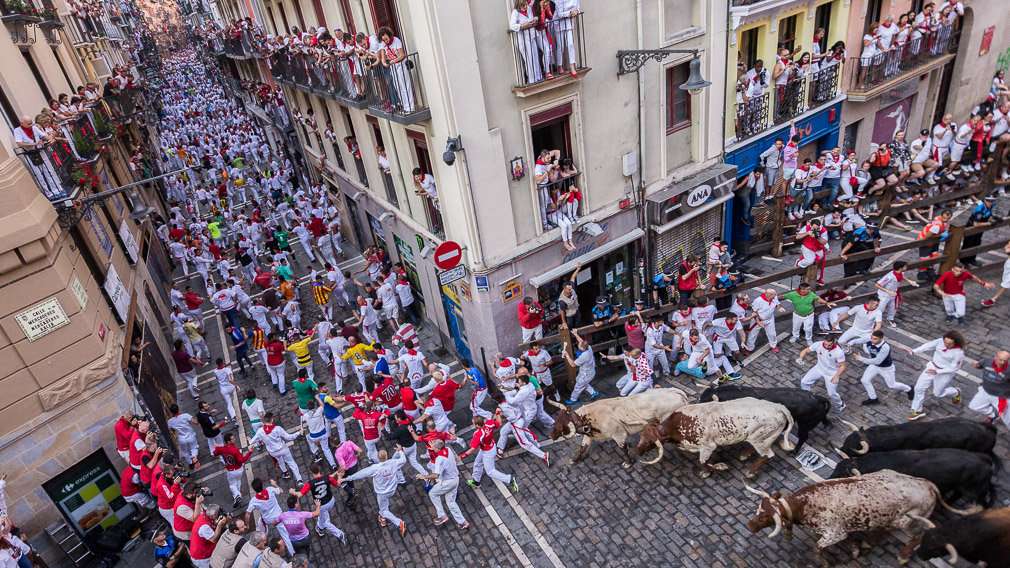
In addition to the exhilarating bull run, the San Fermín festival offers a diverse range of cultural events.
Religious processions featuring statues of Saint Fermín
are paraded through the streets accompanied by music and traditional dances, showcasing the deep religious significance of the festival.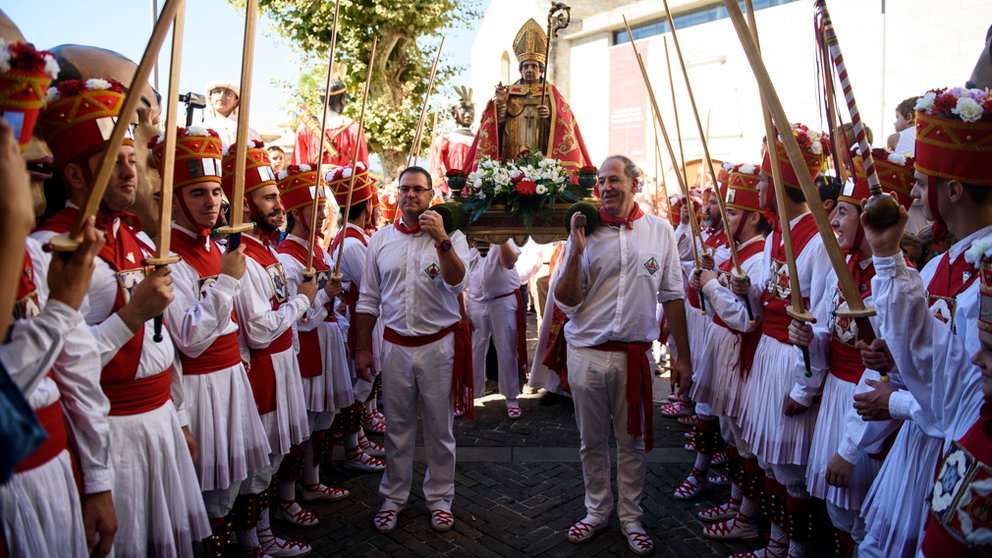
The streets of Pamplona come alive with lively music, dancing, and joyful gatherings, creating an exuberant atmosphere.
Locals and visitors alike enjoy live performances of traditional music, including the spirited Basque folk music called "jotas."
Colorful costumes and energetic dances contribute to the festive ambiance.Fireworks also play a significant role in the festival, lighting up the night sky and adding to the celebratory atmosphere. Accompanied by music, these captivating displays can be best enjoyed from designated viewing areas.
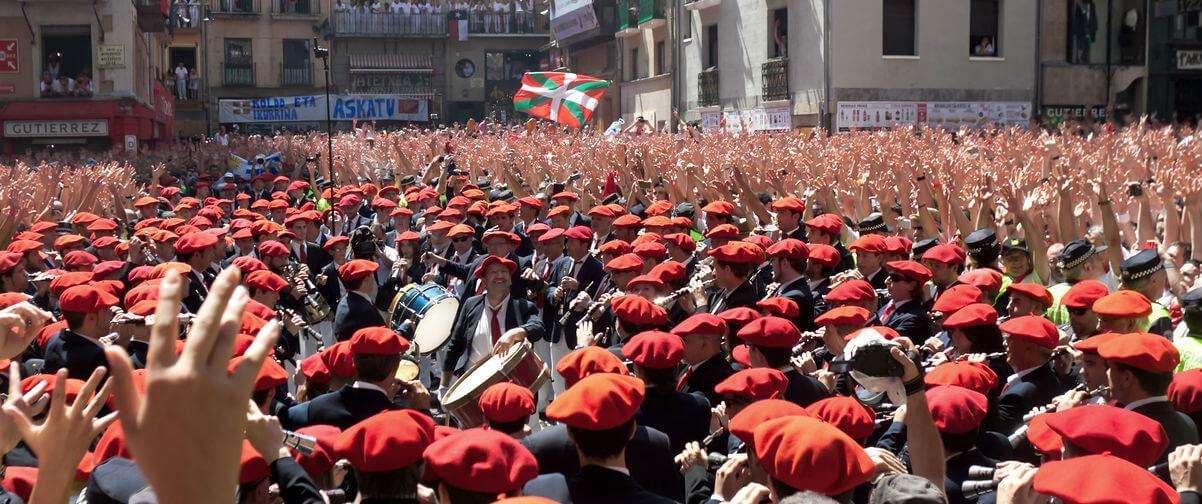
Overall, the San Fermín festival in Pamplona is a unique and unforgettable experience that blends religious traditions, cultural heritage, and thrilling spectacles. It's a time when locals and visitors come together to celebrate with enthusiasm, joy, and a sense of adventure, creating cherished memories that last a lifetime.
Sources : https://www.sanfermin.com/en/
Log In
Shiro from Slowly
complete